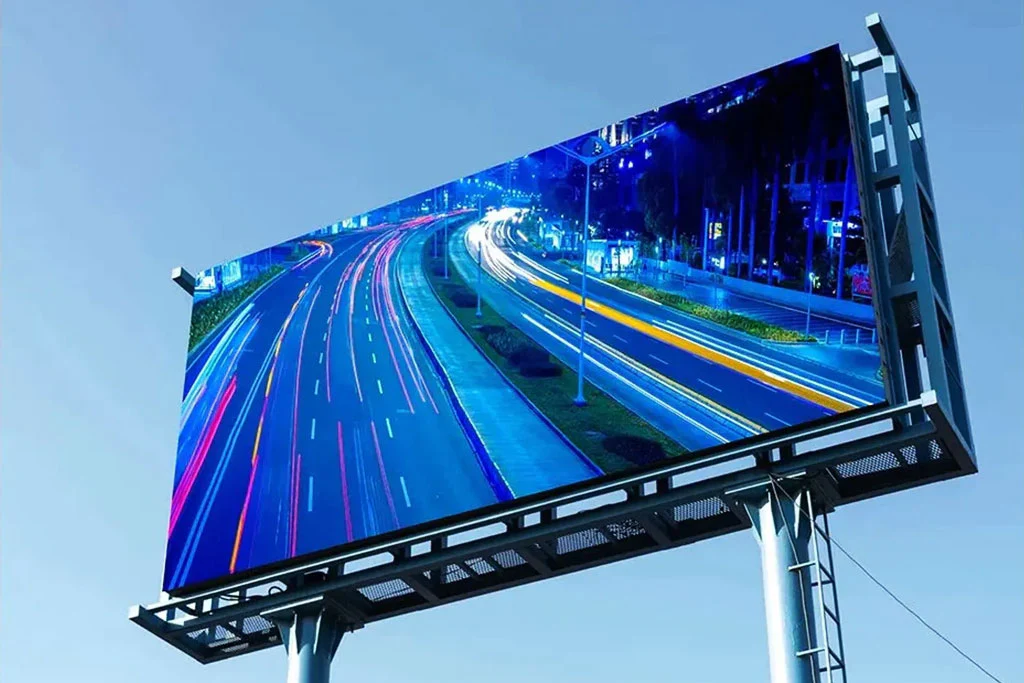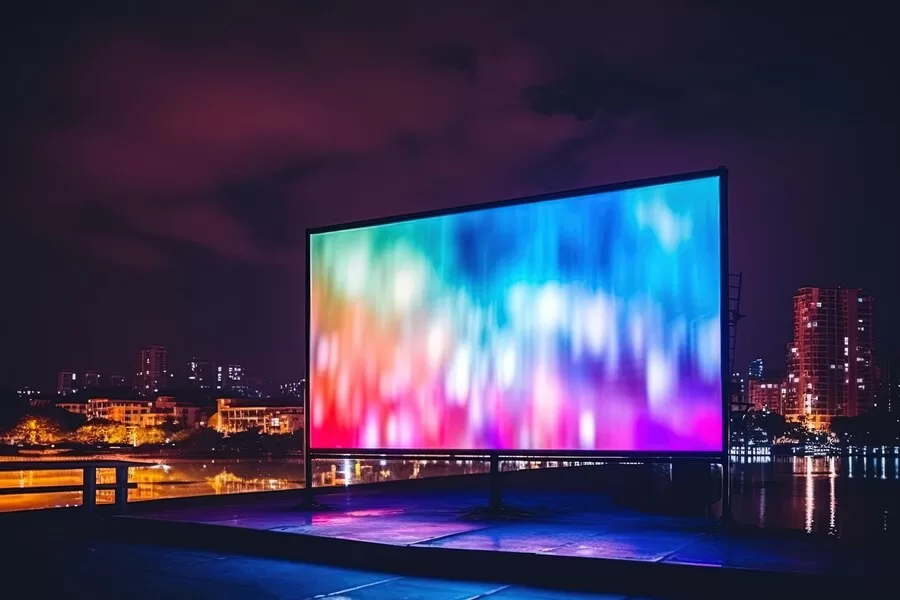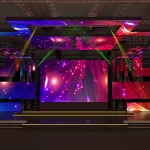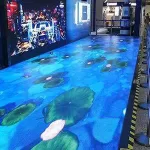Când vine vorba de tehnologia modernă de afișare, două dintre cele mai populare tipuri pe care le veți întâlni sunt Panouri de afișare LED şi Ecrane LCD. Ambele oferă imagini de înaltă calitate, dar diferă în mai multe domenii cheie, inclusiv tehnologie, eficiență energetică și performanță. Înțelegerea diferențelor dintre aceste două tipuri de afișare vă poate ajuta să luați o decizie mai informată, indiferent dacă cumpărați un afișaj pentru utilizare personală sau de afaceri. Să explorăm diferențele cheie și modul în care funcționează fiecare tehnologie.

Ce este un panou de afișare LED?
Un Panou de afișare LED este un tip de tehnologie de afișare care utilizează Diode care emit ușor (LED-uri) pentru a produce imagini și videoclipuri. Panourile LED sunt adesea considerate un subset de LCD (afișaj de cristal lichid) Tehnologie, întrucât se bazează în continuare pe un panou de cristal lichid pentru a controla lumina. Cu toate acestea, diferența majoră este în sursa de lumină.
Într -un ecran LED, LED -uri înlocuiți lumini fluorescente cu catod rece (CCFL) utilizat în ecranele tradiționale LCD. Acest lucru rezultă în culori mai strălucitoare, mai vibranteși o eficiență energetică mai bună. În plus, afișajele LED pot fi mai subțiri și mai flexibile în comparație cu afișajele tradiționale LCD.
Ce este un ecran LCD?
Un Ecran LCDPe de altă parte, este un afișaj cu panou plat care folosește cristale lichide pentru a crea imagini. Aceste cristale nu emit lumină de unul singur; Se bazează pe o sursă de lumină externă, de obicei CCFLS (pentru modele mai vechi) sau LED -uri (în LCD -urile moderne). În termeni mai simpli, un ecran LCD afișează imagini prin manipularea luminii care trece prin cristale lichide.
Tehnologia LCD este adesea folosită pentru o varietate de dispozitive, de la televizoare și monitoare la smartphone -uri și laptopuri. În timp ce ecranele LCD mai vechi folosesc CCFLS pentru iluminarea de fundal, versiunile mai noi folosesc iluminarea LED -ului pentru a îmbunătăți culoarea și luminozitatea.
Diferențe cheie între panourile de afișare LED și ecranele LCD
- Tehnologie de iluminare
Cea mai semnificativă diferență între panourile de afișare LED și ecranele LCD este tehnologia de iluminare de fundal. Afișaje LED Folosiți diode (LED-uri) cu emisie de lumină pentru a oferi iluminare de fundal luminoasă și constantă. Între timp, tradițional Ecrane LCD utilizare CCFLS (lămpi fluorescente cu catod rece) sau LED -uri de fundal în versiuni moderne. - Luminozitate și eficiență energetică
Panouri de afișare LED oferă o luminozitate superioară în comparație cu Ecrane LCD, făcându-le ideale pentru medii în aer liber și de înaltă grație. Tehnologia LED este, de asemenea, mai eficientă din punct de vedere energetic, permițându-i să consume mai puțină energie, oferind în același timp o imagine mai luminoasă. În schimb, ecranele LCD care utilizează iluminarea de fundal CCFL sunt în general mai puțin eficiente din punct de vedere energetic. - Calitatea imaginii și precizia culorilor
Unul dintre avantajele Panouri de afișare LED este precizia și luminozitatea lor superioară a culorii. Tehnologie LED permite un contrast mai bun, negri mai adânci și culori mai vibrante. Ecrane LCD, în special modelele mai vechi, este posibil să nu fie la fel de capabil să producă negri profunde sau albi strălucitori. - Grosime și flexibilitate
Panouri LED sunt mai subțiri și mai flexibili în comparație cu Ecrane LCD. Asta se datorează faptului că LED -uri sunt mai mici și pot fi aranjate în diverse moduri pentru a crea afișaje subțiri. Ecranele LCD, cu utilizarea lor de lămpi de fundal, tind să fie mai mari și mai puțin flexibile. - Cost
În ceea ce privește costurile, Ecrane LCD sunt de obicei mai accesibile decât Panouri de afișare LED Datorită tehnologiei mai simple utilizate în construcția lor. Panouri LED, cu tehnologia lor avansată, adesea vin la un punct de preț mai mare, dar investiția este justificată de performanța îmbunătățită și eficiența energetică. - Durabilitate și durată de viață
Panouri de afișare LED în general au o durată de viață mai lungă decât Ecrane LCD. LED -uri sunt durabile și pot dura până la 50.000 de ore sau mai mult, în funcție de utilizare. Ecrane LCD, pe de altă parte, tind să se degradeze în timp, mai ales dacă se bazează pe iluminarea de fundal CCFL. - Impact asupra mediului
Ambele Afișaje LED şi Ecrane LCD sunt eficiente din punct de vedere energetic, dar Afișaje LED Faceți conducerea când vine vorba de a fi ecologic. LED -uri Consumați mai puțină energie și conțin mai puține substanțe chimice dăunătoare decât CCFLS, care sunt utilizate în unele modele LCD mai vechi.

Când ar trebui să alegeți panouri de afișare LED pe ecrane LCD?
- Utilizare în aer liber: Dacă aveți nevoie de un ecran pentru utilizare în aer liber sau zone cu lumină ambientală ridicată, un Panou de afișare LED ar fi alegerea mai bună. Luminozitatea și contrastul său superior îl fac ideal pentru mediile în care vizibilitatea este o preocupare.
- Eficiență energetică: Pentru cumpărătorii conștienți de energie, Panouri de afișare LED sunt câștigătorul clar. Aceștia consumă mai puțină putere, oferind în același timp imagini de înaltă calitate, ceea ce le face excelente pentru întreprinderi și consumatori care doresc să economisească facturile de energie electrică.
- Vizuale superioare: Dacă doriți un afișaj care să ofere cele mai bune în ceea ce privește calitatea imaginii, precizia culorilor și luminozitatea, Panouri LED sunt calea de urmat. Vizualizările îmbunătățite le fac ideale pentru televizoare, monitoare și semnalizare digitală.
Când este încă un ecran LCD o opțiune bună?
În timp ce Panouri de afișare LED oferă performanțe superioare, Ecrane LCD poate fi în continuare o opțiune rentabilă pentru cei cu un buget. Dacă nu aveți nevoie de cea mai înaltă calitate a imaginii sau de luminozitate extremă, un Ecran LCD S -ar putea să vă potriviți nevoile dvs. bine. Sunt încă utilizate pe scară largă în multe medii de acasă și de birou și sunt excelente pentru sarcini standard, cum ar fi navigarea, munca și consumul de media casual.
Concluzie
În concluzie, Panouri de afișare LED şi Ecrane LCD Ambele oferă o tehnologie de afișare fiabilă, dar diferă în ceea ce privește iluminarea, eficiența energetică, calitatea imaginii și performanța generală. Panouri LED Oferiți o luminozitate mai bună, precizia culorilor și eficiența energetică, ceea ce le face o alegere superioară pentru multe aplicații de înaltă calitate. Cu toate acestea, Ecrane LCD sunt încă o opțiune viabilă și mai accesibilă pentru utilizarea standard. În cele din urmă, decizia dintre cei doi va depinde de nevoile dvs. specifice, de bugetul și de tipul de experiență de afișare pe care îl căutați.





